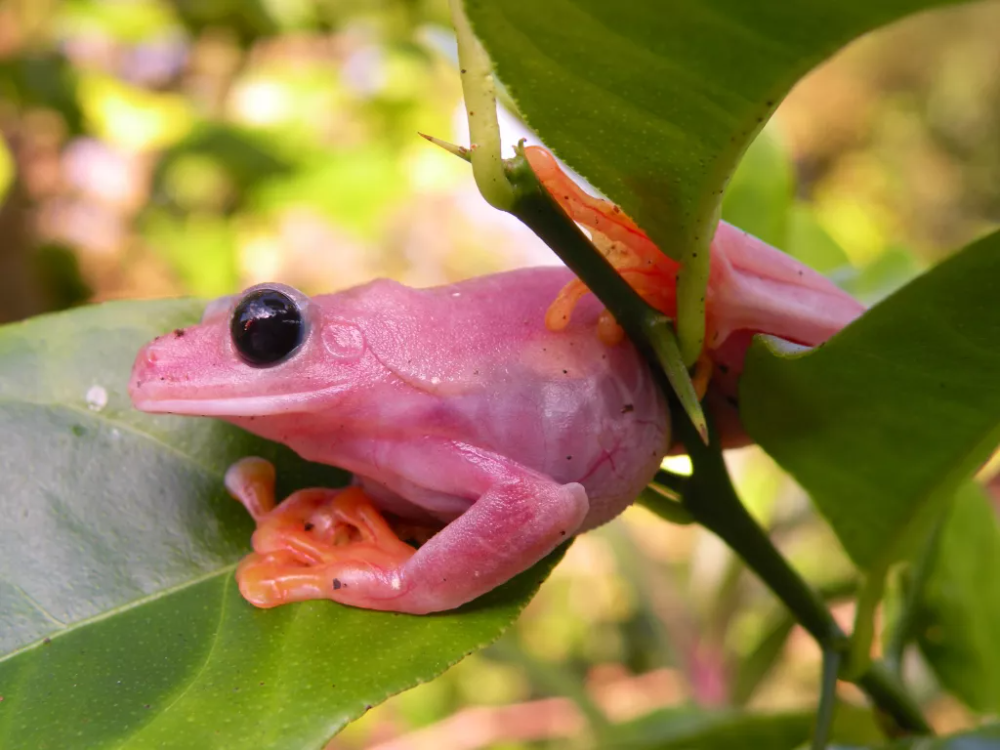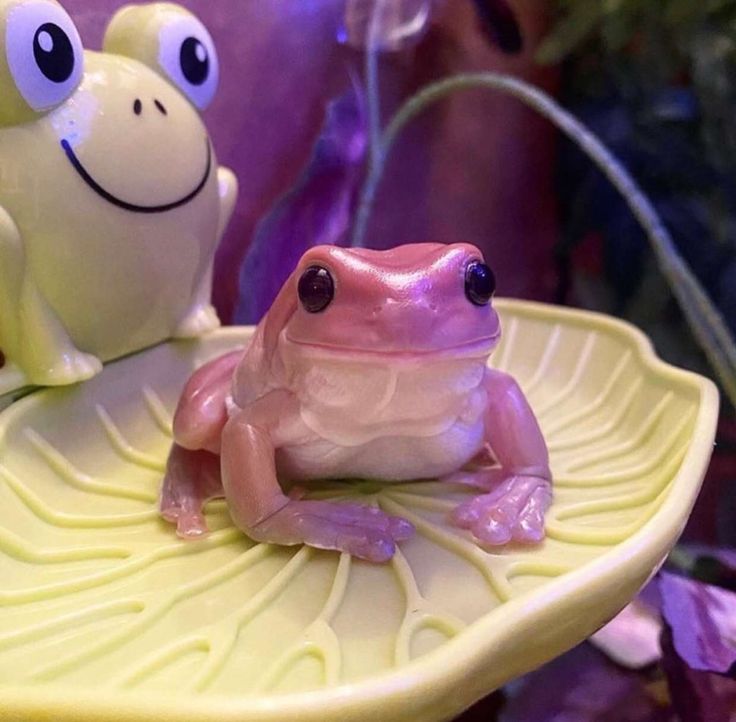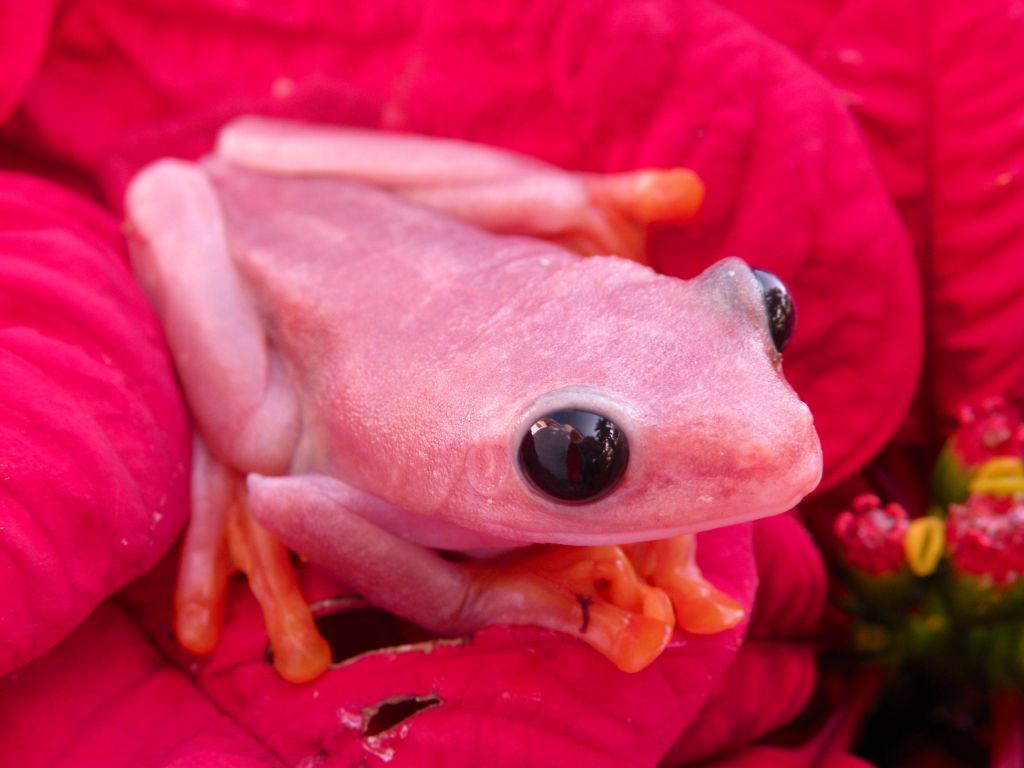Introduction
Introducing the latest addition to the amphibian family – the Pink Baby Frog! This unique species is sure to capture your attention with its vibrant pink color and playful attitude. Whether you’re an experienced amphibian enthusiast or just starting out, the Pink Baby Frog is sure to bring a smile to your face. Read on to find out more about this unique and delightful creature.

Why the topic is interesting and important
The sight of a pink
baby frog may be a surprise to many, but its presence is a testament to the wonders of nature. This unique creature is as fascinating as it is intriguing, and its colorful skin is sure to captivate even the most experienced frog enthusiast. From its place in the ecosystem to its unique anatomical features, a pink baby frog is sure to bring a smile to the face of any nature lover.
Welcome to the wonderful world of pink baby frogs! These unique amphibians are sure to bring a splash of color to any home, while their playful and curious nature will keep you entertained for hours. Whether you’re looking for a pet or just want to admire their beauty, pink baby frogs are sure to delight. Discover all the secrets of these delightful creatures and learn why they make such amazing friends.
Description of the Frog
It’s time for a cuteness overload! An adorable pink baby frog has been discovered in nature, and it’s sure to put a big smile on your face.This special creature is one of its kind and has been found in the Amazon rainforest. It is believed to be an amphibian of the family Centrolenidae, more commonly known as glass frogs.
The discovery of this pink baby frog is an exciting find for scientists and animal lovers alike. It is the first-ever amphibian of its kind to be discovered in nature. While there are many types of frogs in the world, this particular pink baby frog is one of a kind and has never been seen before.
Conservation Status
The adorable pink baby frog is not only rare but it is also very small. It measures only about 1.6 inches (4 cm) in length and is very light in weight, weighing in at only a few grams. This tiny frog has big eyes and its skin has a unique hue of pink.The discovery of this unique creature is a great step forward in understanding amphibians. Scientists are already researching the frog’s behavior and biology to learn more about the species and its relation to other amphibians.
The pink baby frog is a symbol of hope and beauty and has inspired many people to take better care of the environment and its animals. We should all appreciate the wonders of nature and its creatures, and this pink baby frog is sure to bring a smile to everyone’s face.
Biology and Behavior
Cuteness overload! An adorable, pink baby frog has been found in nature and is going viral on social media.The baby frog, which was discovered in the wild by an unnamed photographer, has been described by many as “the most adorable frog ever seen.” Its unique, bright pink color has been captivating the attention of nature lovers around the world, who are all eager to catch a glimpse of this rare beauty.

While the exact species of the frog is still unknown, experts have speculated that it could be a type of South American strawberry frog, commonly found in the rainforests of Colombia, Ecuador, and Peru. Despite its size, the frog has an impressive set of legs, making it well equipped for hopping around its habitat.
The discovery of this bright-pink baby frog has been a real delight for many, with some even calling it a “benevolent ambassador of nature.” The tiny amphibian has been sending out a clear message: nature is a place of beauty and wonder that deserves to be protected and cherished.The adorable pink baby frog has been a source of joy and amazement for people of all ages. It’s a reminder that nature still has so many wonderful surprises in store for us, and that even the smallest of creatures can be a source of immense joy and delight.
Description of the frog’s anatomy and biology
It’s a story that’s sure to bring a smile to your face: a recent discovery of an adorable pink baby frog was recently made in nature! This sweet-looking amphibian was found in a small pond in a nature preserve located in Wisconsin.This pink baby frog is a species of the American Bullfrog, and its unique coloration is due to a genetic mutation known as leucism. Leucism is a trait that affects the pigment-production of an organism, causing partial or complete color loss in some areas of the body.
The little amphibian was first spotted by a park ranger while they were out doing a survey of the area. Upon closer inspection, they noticed the frog’s unique pink color, and they quickly contacted a local wildlife biologist to investigate. After a few days of observation, the biologist was able to confirm that this was indeed a rare case of leucism in a wild bullfrog.
What can be done to help conserve the species
The pink baby frog has quickly become a symbol of hope for nature lovers everywhere. Its unique coloration and playful demeanor has brought some much-needed joy in a time when the news can be overwhelming. Its discovery is a reminder that even in the darkest of times, beauty can still be found in nature – and it’s important to take a moment and appreciate it.
While the pink baby frog is certainly a sight worth seeing, it’s important to remember that any animal, including amphibians, should not be disturbed in their natural habitat. If you ever come across a wild animal, it’s best to leave it alone and observe from a safe distance.
Maui META v10 Latest Version Free Tool
Conclusion

The pink baby frog is a true miracle of nature, and its discovery should be appreciated and celebrated. We can all learn a lesson from this little amphibian: even in times of trouble and difficulty, beauty can always be found in nature – and it’s important to take a moment and appreciate it!

 While the exact species of the frog is still unknown, experts have speculated that it could be a type of South American strawberry frog, commonly found in the rainforests of Colombia, Ecuador, and Peru. Despite its size, the frog has an impressive set of legs, making it well equipped for hopping around its habitat.
The discovery of this bright-pink baby frog has been a real delight for many, with some even calling it a “benevolent ambassador of nature.” The tiny amphibian has been sending out a clear message: nature is a place of beauty and wonder that deserves to be protected and cherished.The adorable pink baby frog has been a source of joy and amazement for people of all ages. It’s a reminder that nature still has so many wonderful surprises in store for us, and that even the smallest of creatures can be a source of immense joy and delight.
While the exact species of the frog is still unknown, experts have speculated that it could be a type of South American strawberry frog, commonly found in the rainforests of Colombia, Ecuador, and Peru. Despite its size, the frog has an impressive set of legs, making it well equipped for hopping around its habitat.
The discovery of this bright-pink baby frog has been a real delight for many, with some even calling it a “benevolent ambassador of nature.” The tiny amphibian has been sending out a clear message: nature is a place of beauty and wonder that deserves to be protected and cherished.The adorable pink baby frog has been a source of joy and amazement for people of all ages. It’s a reminder that nature still has so many wonderful surprises in store for us, and that even the smallest of creatures can be a source of immense joy and delight.
 The pink baby frog is a true miracle of nature, and its discovery should be appreciated and celebrated. We can all learn a lesson from this little amphibian: even in times of trouble and difficulty, beauty can always be found in nature – and it’s important to take a moment and appreciate it!
The pink baby frog is a true miracle of nature, and its discovery should be appreciated and celebrated. We can all learn a lesson from this little amphibian: even in times of trouble and difficulty, beauty can always be found in nature – and it’s important to take a moment and appreciate it!
